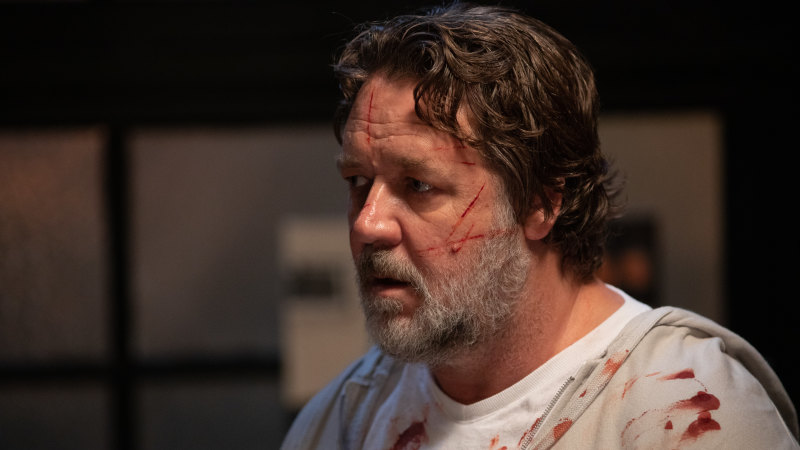From the title alone, most viewers will have a fair idea of what to expect from the new horror movie The Exorcism, starring Russell Crowe. Where cinema is concerned, the stock notion of what demonic possession looks like hasn’t much changed since William Friedkin’s landmark The Exorcis t, which retains its shock value from the moment that the baby-faced Regan MacNeil (Linda Blair) starts jerking her limbs, growling obscenities and glaring furiously at her aghast mother (Ellen Burstyn). That’s before we get to the projectile vomiting, the unspeakable acts performed with a crucifix, and the other set-pieces that made the film, based on screenwriter William Peter Blatty’s novel, one of the major pop culture events of 1973.
Russell Crowe stars in The Exorcism. Some of its success can be attributed to what was then in the zeitgeist, including increasing public interest in the occult (in the film, a ouija board is the apparent conduit that lets the demon in). As critics have noted since, it can also be seen as a conservative parable about 1970s youth rebellion, in which a young girl acts out against her elders in a manner both violent and explicitly sexual.

But half a century on, why do themes of demonic possession and exorcism continue to loom so large in horror cinema? Take, for instance, the enormously successful Conjuring series launched by Australian director James Wan in 2010, with Patrick Wilson and Vera Farmiga as Ed and Lorraine Warren, a real-life, devoutly Cathol.























